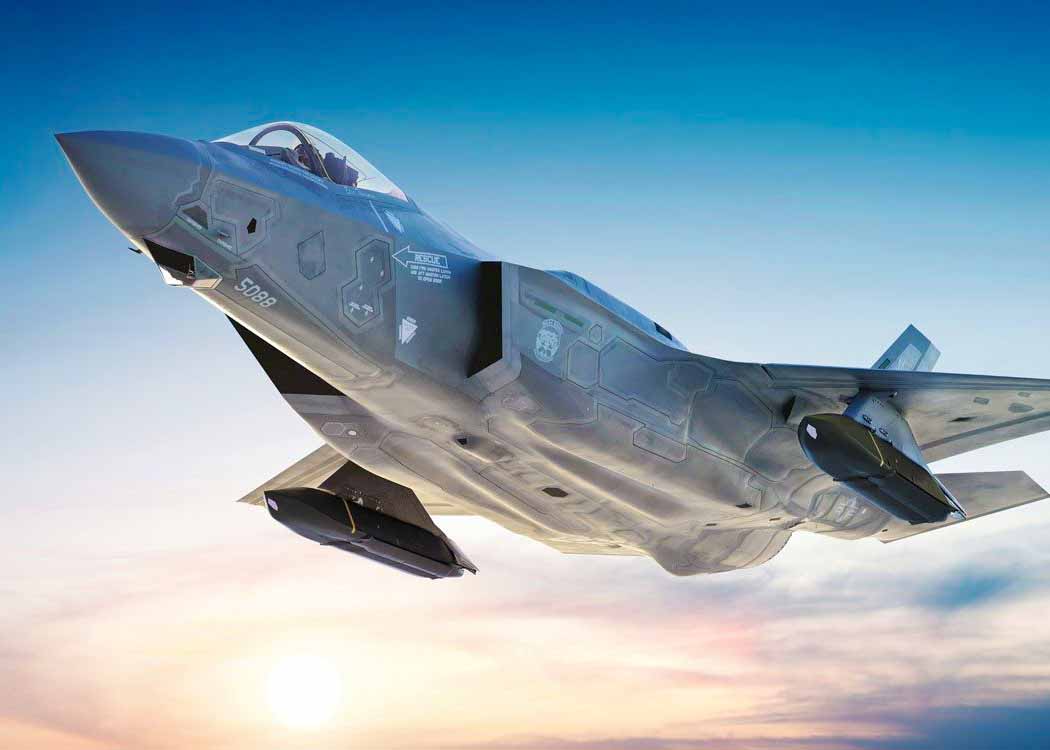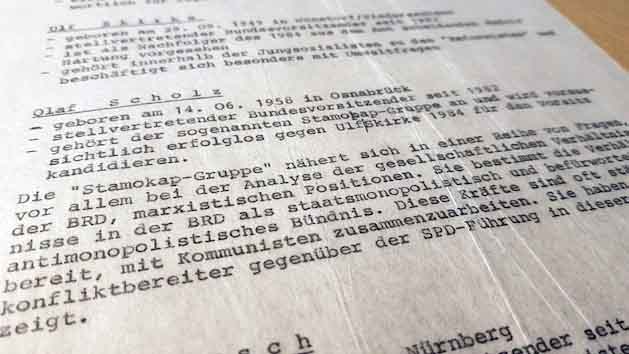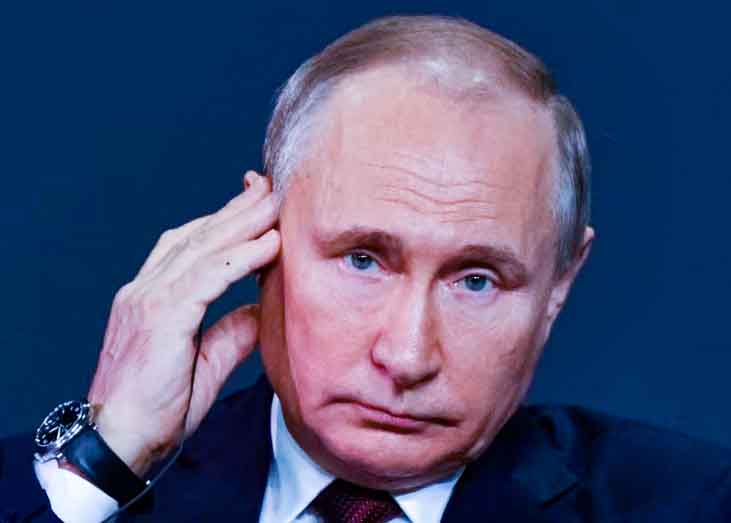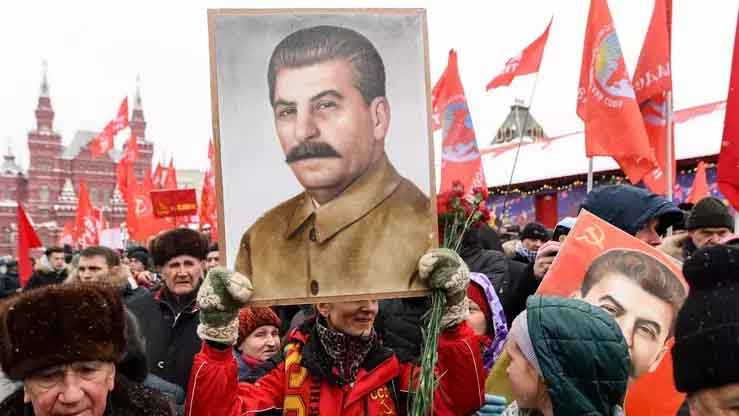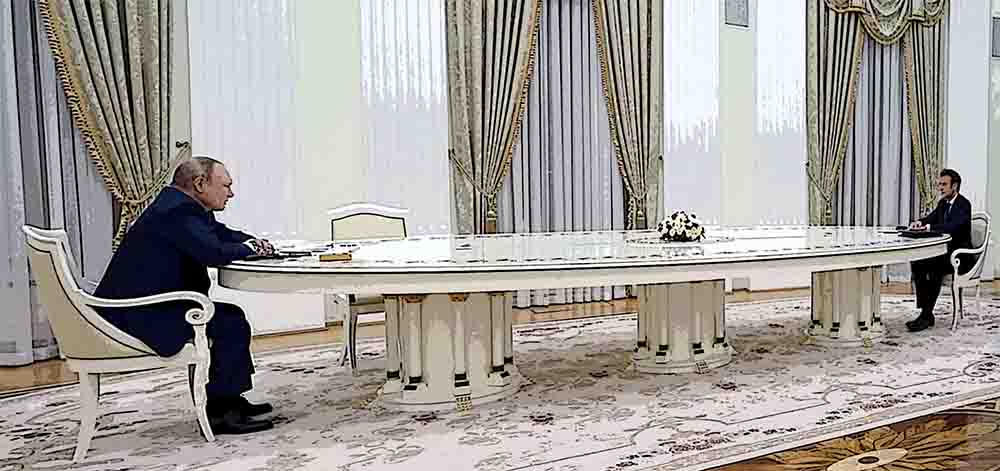Over the past few days, the media has been buzzing about the potential transfer of Polish MiG-29 fighter aircraft, originally of Soviet production, to Ukraine, or rather, the failure thereof. Let's take a closer look at this mess.

Polish MiG-29 (Source: Wikipedia)
Hot potato
Let's start at the kindergarten level: "Hot Potato" is a game for children, popular in American kindergartens. It is simple ball play. Children sit in a circle and pass each other a "hot potato" (ball). One has to be careful not to drop it, but — and this is the essence of this game — one should also get rid of it as soon as possible. The loser is the one who, upon an unexpected signal, ends up with the potato in hand.

(Graphics: public domain)
It would be quite funny to observe how, instead of small children, this game is played not only by adults, but... by serious countries, NATO members, were it not for the fact that the matter concerns a very important and, at the same time, delicate situation. In this case, the Polish MiG-29 fighter planes (NATO: Fulcrum ) turned out to be the hot potato.
Air Superiority
Air superiority is a very important element of modern warfare. It has been known since the Second World War that the side of the armed conflict which is able to ensure complete and uncontested control of the airspace gains a great strategic advantage. It can fly and attack ground targets from the air with impunity. It can move its troops and supplies by air. It can observe the enemy troops' movements undisturbed.
At the moment, Russia is invading Ukraine, in which the Russian military aviation is also taking an active part. Experts differ in judgement as to whether Russia has already deployed its best air force and resources to the hostilities, but they all agree that the effectiveness and accuracy of their actions does not seem to be extraordinary. Moreover, since they do not appear to have sufficient amounts of overly advanced fire systems, such as guided or homing missiles, they do not have the ability to perform "surgical" strikes against military objects from high altitudes. In order to be able to attack ground targets in the hope of a hit, they have to fly "low and slow", thus exposing themselves to fire from the anti-aircraft defense of Ukraine. So it cannot be said that they control the airspace.
"As of today, the airspace over Ukraine is still not controlled by either side," a senior Defense Department official told reporters in the Pentagon on Tuesday. [6]

MiG-29 of the Polish Air Force (Source: Wikipedia)
So they quickly switched in their tactics from relatively selective attacks on war installations in the first days of the invasion, to total war, in which they bombard cities and terrorize civilians, trying to incite panic and break people's fighting resolve.
Pictures that Polish people know too well from September 1939 come to mind. Today, as then, bombs — as one can see from many recordings from various cities in Ukraine — fall on streets, residential districts, hospitals and schools. The equipment is more modern today, powered by jet or rocket engines instead of propellers, but the bestiality and dehumanization of attackers are the same.
The Russian Federation, of course, denies everything in its statements. Does anyone else fail to see that fascism and communism/Russian imperialism are just two sides of the same coin?
No-Fly Zone
For many days, Volodymyr Zelensky has been repeating his appeal to the West to completely close off the airspace over Ukraine, or to provide fighter planes for its defense. Closing the airspace over Ukraine would require the creation of the so-called no-fly zone. NATO has already introduced no-fly zones in the past, e.g., over Yugoslavia, and over Iraq.
The mere announcement of a no-fly zone, however, does nothing. For it to make sense, it requires active patrolling of the closed airspace by NATO warplanes to enforce the ban. Then it would be very likely to encounter planes that are in breach of the given flight ban. It is not difficult to conclude that all this could quickly lead to a clash between NATO and Russian planes and, as a result, drag the entire North Atlantic Alliance into the war with Russia, with all its consequences.
Such a scenario would certainly be very useful to Ukraine, but unfortunately the threat of a planet-wide nuclear disaster could not be ruled out then. And if not on a planetary scale, then at least a tactical nuclear strike, for example against Warsaw (or Berlin!), just out of spite, becomes possible. That is why NATO chief Jens Stoltenberg, when asked last Friday whether it was possible to even partially close the airspace over Ukraine in order to create humanitarian corridors, stressed that NATO had already made it clear that it would definitely not enter Ukraine — neither its land, nor into its airspace.
Combat Planes
NATO was thus much closer to the latter option, which was requested by the President of Ukraine. It is only possible to hand over aircraft that could be used by Ukrainian forces almost immediately, without the need for many months of training, and those that do not require ground support at a level that is currently impossible to obtain in Ukraine. So, handing over the F-16 fighters, for example, is out of the question.
Supplying Western-made aircraft would not solve the problem. Ukrainian pilots do not know such machines and cannot fly them. For this reason, the selection of countries that could support Ukraine with combat planes is limited.
The President of Ukraine, Volodymyr Zelensky, asked the West for MiG-29 fighters, which are used in Ukraine and on which pilots of the Ukrainian air force had been trained. The Ukrainian air force still uses them, although it is very difficult to objectively assess how many of them Ukraine still has in combat readiness. These are, at least, the planes that the Ukrainian pilots know. Polish military, among others, is also equipped with them.

MiG-29 in the colors of Polish military aviation (Source: Wikipedia)
For these reasons, only the MiG-29 planes operated in NATO countries like Poland (29 of them [8]), Bulgaria (16) and Slovakia (12), were at play. Both Slovakia — with the voice of the head of the Ministry of National Defense Jaroslav Nad — and Bulgaria — with the voice of Prime Minister Kiril Petkov — immediately rejected this idea. In the case of Slovakia, it was probably dictated by the fact that, by handing over these planes, it would be completely deprived of fighter aviation. The Slovak government was — understandably — concerned about the loss of its air force until it would sign the agreement with Poland on the protection of Slovak airspace, currently in the works.
The Polish President Andrzej Duda also publicly rejected this idea on March 2, when he stated firmly that Polish jets would not fly into Ukrainian airspace.
European Indiscretion or Deliberate Diversion?
The entire saga about the airplanes began just days after Russia's invasion of Ukraine. On Sunday, February 27, the European Union announced the handover of combat aircraft to Ukraine, which was immediately picked up by the media and the Ukrainian government.
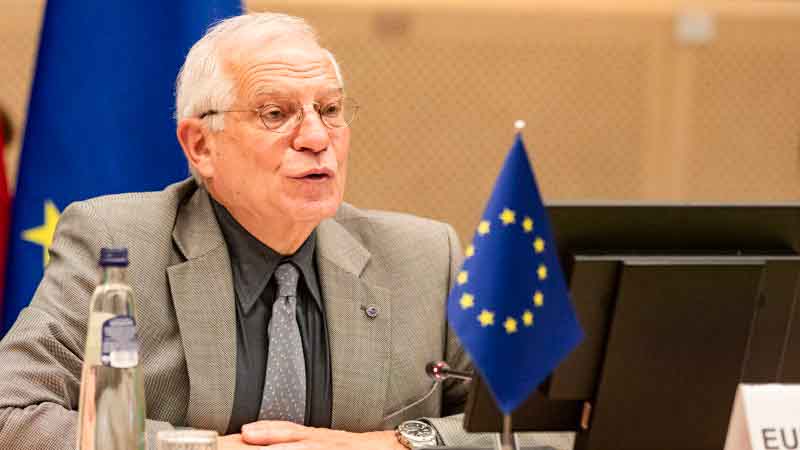
Josep Borrell Fontelles, High Commissioner for International Affairs of the European Union
(Source: euractiv.eu)
It was the head of security of the European Union, Josep Borrell Fontelles (a Spanish socialist who — despite objections from many EU politicians — made a controversial pilgrimage to Moscow at the beginning of February) announced that Poland and other Eastern European countries that still fly Russian fighters will quickly hand over the jets to Ukrainian pilots. The announcement came as a shock to many, including in Eastern European capitals, who hoped to keep the transfer a secret.
The Ukrainian government, having heard the proposal, hastened to make use of it, creating an infographic, which showed that it would soon receive 70 used Russian fighters from Poland, Slovakia and Bulgaria.
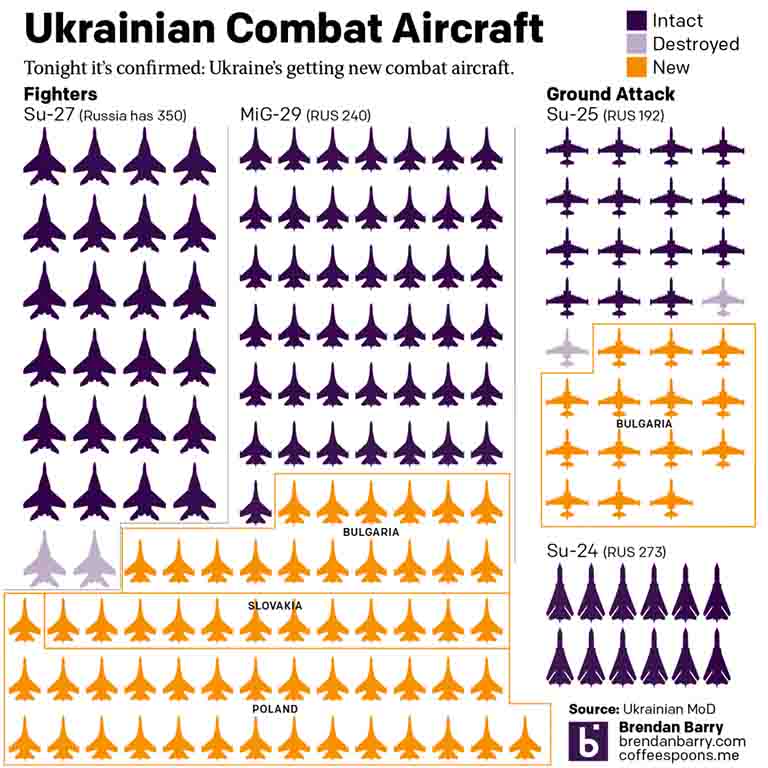
Ukrainian infographic, showing planes from Poland, Slovakia and Bulgaria (Source: Ministry of National Defense of Ukraine/coffeespoons.me)
Equipping Ukraine with additional planes was one of the topics of President Volodymyr Zelensky's speech to the American Congress on Saturday, March 5. The president of Ukraine told the senators that Poland was ready to send its machines to help the Ukrainian army. It was supposed to be the very same MiG that Ukrainian pilots are familiar with. The President of Ukraine claimed that the Polish authorities were waiting for the green light from the USA.
All in all, Mr Borrell had, to put it mildly, blown it. First of all — he unnecessarily spoke about it in public at all. The concept of a military secret seems alien to Western politicians. This transfer would probably have been possible if the contract had been kept secret. Borrell later recanted these comments, stating that it was up to individual nations to decide, but that didn't matter anymore. Or was it a deliberate disclosure of a military secret to torpedo the entire project?
As the case in the media had already been unnecessarily blown up to unbelievable dimensions — the talk was even about the planes being operated from airports in Poland — both the Polish president and the prime minister stated that no planes from Poland left anywhere, and Polish airports are being used by planes operating in Poland. [13]
And that should have ended there.
Americans Give "Green Light"
Blown up by the media, the European proposal began to spread rapidly and finally made it to Washington. US Secretary of State Antony Blinken entered the action and on Sunday, March 6, 2022, on the CBS network program "Face the Nation", speaking from Moldavian Chisinau, said that the US is considering replacing Polish fighters with other, equivalents, if the Polish government decides to send planes to Ukraine:
There is a green light for that. In fact, we are now talking to our Polish friends about what we could do to meet their needs if they really decide to deliver these fighters to the Ukrainians; what we can do, how we can help to make sure that they have something to replace the planes they are handing over to the Ukrainians. We have very active discussions on this topic with them. [7]

U.S. Secretary of State Anthony Blinken on CBS, on March 6, 2022 (Source: YouTube)
The British Ministry of Foreign Affairs added that it would support any decision of the Polish authorities in this matter, but, as they noted, such a move was associated with the risk of a retaliation from Russia.
Of course, everyone knows that, even if the European Union pays for the planes, the resulting bombs will not fall on London or Brussels, but on Sofia, Bratislava or Warsaw.
So now, in turn, the American and British administrations are giving additional publicity to the whole matter, and Poland has a "green light" from the Anglo-Saxons to make a decision on its own that carries the risk of retaliation, long after it publicly rejected the whole idea as unrealistic...
A Great Idea?
There is no need to explain to anyone why the proposal to hand over the MiGs was not met with the enthusiasm of countries that would have do it on their own and thus be directly targeted by the vengeful Putin.
Let us remind you that these are small countries (Bulgaria, Slovakia), or at most medium-sized countries (Poland), without nuclear capabilities, or decent anti-aircraft or anti-missile defense. The Patriot defense system still does not exist in Poland, and even if it did, no defense system is 100% reliable.
The United States and its allies are already supplying Ukraine with a range of weapons. Everyone is concerned, however, that Putin would perceive the supply of combat aircraft, i.e. advanced weapons, as an escalation, which he may interpret as NATO's involvement in the conflict against Russia.
In the face of all these dilemmas, Stanisław Janecki, in wPolityce.pl, on Monday, March 7, in the article "There is a simple way to hand over MiG to Ukraine yet not to endanger Poland, Bulgaria or Slovakia", proposed a seemingly brilliant solution: [13]
These MiGs... could be bought by the USA from Poland, Bulgaria and Slovakia (or exchanged for the F-16). They could also be bought in part by Canada, a strong NATO member, and a state with special relations with Ukraine due to the great importance of the Ukrainian minority in that country.
The idea was to "limit Putin's room for maneuver" — and possible misinterpretations — and remove the specter of revenge. "Instead of persuading Poland, Bulgaria and Slovakia to hand over the planes to Ukraine, it is enough to buy (or exchange) them and put them at the disposal of the Ukrainian air force." — writes Janecki.
The Polish Proposal
Poland is a country with a big heart that wants to help Ukraine somehow — and has been helping from the very beginning in many respects. In order to break out of the deadlock in relation to the jets, Poland decided to make an unexpected move that was clearly not agreed upon with the Americans.
On Tuesday, March 8, in the evening, having obtained that "green light" from its most important ally in NATO, the Ministry of Foreign Affairs of Poland informed, as if inspired by the article by Mr. Janecki, that Poland was ready to give up its planes, but under certain conditions.
Here is the full text of the statement of the Polish Minister of Foreign Affairs Zbigniew Rau, of March 8, 2022: [9]
The authorities of the Republic of Poland, after consultations with the President and the Government of the Republic of Poland, are ready to immediately transfer all their MIG-29 planes free of charge to the base in Ramstein and place them at the disposal of the Government of the United States of America.
At the same time, Poland is asking the United States of America to provide it with used aircraft with similar operational capabilities. Poland is ready to immediately agree on the terms of purchase of these machines.
The Polish government also asks other NATO countries — owners of MIG-29 planes — to act in a similar way.
Although, so far, Poland has taken the position that it does not intend to part with the fighters, it was willing to act, but on the condition that it would be a joint NATO decision. The government also noted that it can hand over the fighters, but only if the US remedies the shortcomings by delivering replacement planes.
However, the mood in Washington changed on Wednesday, the same day, when German Chancellor Olaf Scholz announced that Polish combat planes "certainly" would not land at Ramstein.
President Zelensky, still full of hope, said on March 9:
We are grateful to Poland for its readiness to hand over combat aircraft to Ukraine. We heard that the official decision has been made, but now we want to see what's next. We hear that they are to be sent to the base in Germany. And now they say that Poland's decision is unjustified. We hear it in Washington. Make up your mind as soon as possible, don't bounce the ball back. Send us the planes. [19]
The American government, without mincing words, immediately pointed out to the Poles that they had not consulted their American counterparts before the announcement. "As far as I know, we have not been consulted that they plan to hand over the planes to us," said Undersecretary of State for Political Affairs at the State Department Victoria Nuland during a hearing at the Senate Foreign Affairs Committee. It seems that secrecy in negotiations is also foreign to Polish diplomacy.
The Media Storm
Since then, the world's media have repeated the thesis that the Polish government is supposed to have completely surprised Washington on Tuesday, by announcing that it is ready to immediately put its 29 MiG-29 fighters at the disposal of the US, assuming that they will be handed over to Ukrainian combat pilots for the Russian invasion.
The USA quickly replied that the transfer of fighters to Ukraine was only a "sovereign" decision of each country. And in the context of the delivery of American planes to Poland, White House spokeswoman Jen Psaki said that such a transfer usually takes years, and the proposed deal is "untenable."
American TV networks began to outdo each other, analyzing the Polish proposal.
The ABC network, for example, on Wednesday March 9, called it "inexplicable." Alleged "experts", and those with experience in the Pentagon at that, were amazed why Polish fighter planes would be moved from a distance of approx. 640 km (400 miles) from a theater of war in Ukraine to a base located more than 2,700 km (1,700 miles) away. American (infantry, retired) general Robert Abrams said on ABC: "almost crazy."

A Media "Expert", Gen. Abrams, on the ABC TV program, cannot conceal surprise why Poland could put up such a position (Source: YouTube / ABC News)
Why is it so difficult for an American general, and with supposed experience, to understand? The fact that Poland does not want to find itself alone in conflict with militant Russia is — according to him — "inexplicable"?
The United States now sticks to the narrative that it was "completely surprised" by the offer from Poland. Let us recall that Blinken's speech took place on Sunday, March 6.
So let's recap: the request that the United States provide Poland with used jets with "adequate capabilities" came after weeks of negotiations between Washington and Warsaw to transfer the planes to Ukraine to fight the Russians. Indeed, it is difficult to talk about complete surprise here.
If we look at how absolutely crucial the Polish border is for this war — both for humanitarian and military reasons — sending MiGs to Germany, or another country closer, such as Moldova, and from there, to enter the Ukraine, would make the most sense.
Poland is already the source, and the main hub for most of the military aid directed to Ukraine, so it is already the main NATO country sticking its neck out. The time has come for another country to rise to the occasion.
Preschool Games
This is where we return to the kindergarten and to the "hot potato" game — described at the beginning of this article. After the specific Polish proposal, everyone suddenly shifts the responsibility for the decision to other "sovereign" countries. Nobody wants to be last holding the potato in their hand, and become Putin's target.
While no one is really saying it, neither NATO (read: Americans) nor Germany want Russian missiles targeting Germany or the United States in retaliation for delivering jets to Ukraine directly from a US military base in Germany. They prefer, of course, that the planes be sent directly from Poland — or preferably, not at all.
It is childish that everyone tries to avoid saying the obvious: Germany and the USA are afraid of exactly the same thing as Poland, that is, of direct retaliation from Russia. Therefore, they much prefer to see Poland in the crosshairs than themselves. It's understandable, but not nice. And the media campaign against Poland is hypocritical. The handover of MiGs is a question of risk, and the US is trying to shift that risk entirely to its ally. In this way they are testing the "pain threshold" of the Russians, but they want to check it using their allies. And finally they capitulate — and Putin only rubs his hands.
Fortunately, there is no shortage of criticism in social media about the alleged "sudden surprise" of the US with the Polish proposal. For example, user Pat Clark commented on YouTube about General Abrams' analysis:
I find it amazing that a man who is so clueless made General. (1) The Ukraine begged for air power. (2) The US reneged on its promise to protect Ukraine, but said if Poland wanted to give Ukraine MiGs the USA would "greenlight it". (3) Since Poland borders Russia and is itself begging for NATO toops, it offered to give USA those MiGs to transfer to Ukraine. ..So the USA backed out of that promise also and "redlighted" the same deal it told Poland to do the day before... Shame Shame .. The Russian attacks are evil , but when good men stand by and do nothing its evil too. ... [4]
Mr. Jean Claude Gombaniro added:
Poles aren't that stupid. USA is cheerleading Europeans to fight
Against this background, an article in The Wall Street Journal stands out, openly criticizing the American administration of Joe Biden for its appeasement attitude towards Putin, ridiculing their sudden "surprise" with the Polish proposal, criticizing that they did not support it constructively:
NATO countries are already sending all kinds of weapons to Ukraine. Is the Polish MiG with the Ukrainian pilot somehow more provocative than the Turkish drone or the American anti-tank missile? Supplying planes is not the same as if NATO airmen shot down Russian jets directly. [15]
Does Ukraine Need Polish Warplanes at All?
The MiG-29 are the only planes that can find their way into the hands of the Ukrainian army. The only NATO country that has such planes at its disposal at the moment is Poland. However, no one is talking about whether the transfer of these planes to Ukraine would be the right move from the military perspective.
Let us remind you that, at the very beginning of the conflict, Ukraine lost a large part of its air force. For obvious reasons, the exact numbers are not known, but it can be assumed that there were some losses, considering that the Ukrainian leadership almost completely didn't believe that Russia would attack on a full scale, and thus may not have had time to relocate its air force. .
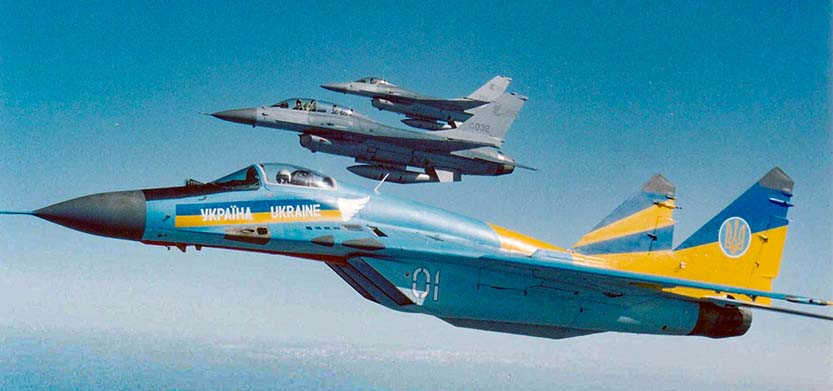
MiG-29 (foreground) in the colors of the Ukrainian Air Force (Source: Wikipedia)
Already, on the first day of the conflict, the Russians attacked Ukrainian radar installations for airspace monitoring and early warning. We've all seen pictures of destroyed radar stations. Airports also fell victim to early raids and rocket attacks. What is their condition today? Does the Ukrainian air force have adequate bases from which Polish planes could operate?
Modern military aviation is not only about planes and airports. It's about the entire foundation of ground maintenance, weapons and equipment. It is also a radar network, without which effective guidance and command of the air force is impossible. It is also a communications network, along with electronic data encryption systems. These are not the times of September 1939, when the heroic Polish pilots took part in the fight even without a radio station onboard. The operation of today's military aviation requires a deep basis on the ground and constant coordination in the air.
And here are the questions: Does Ukraine still have a radar system that would be able to monitor the situation in the air? Do they have spare parts for the planes? Are there sufficiently qualified pilots available? Are there enough mechanics, armor personnel, and other ground crews at the specific locations these people would be needed? Are the air force communication and command systems still operational? Did the Russians not destroy all air force bases, airfields and runways with their ballistic missiles right at the beginning? Where would these jets be secured, re-supplied/refueled and where would they fly on missions from?
Please note that we do not even mention prosaic issues, such as the necessary fuel and ammunition supplies for the airplanes, because we assume that their deliveries would be possible from NATO countries, via Poland, for example.
Airspace monitoring is now probably also provided by NATO, whose reconnaissance and observation planes are constantly in the air along the borders of the member states bordering Ukraine, so this may not be the biggest problem. But the lack of pilots reported by Forbes before the war [18] could be decisive.
Air defense is a separate issue. First, let us note how effective the defense of Ukraine against enemy planes is. We've all seen pictures of Russian planes shot down. Portable, shoulder-fired, individual anti-aircraft systems (MANPAD, or Man-Portable Air Defense Systems), including the Polish Piorun, can boast of phenomenal effectiveness.
The Russian side not only has situational awareness by monitoring the airspace over Ukraine with its radar installations, but also has MANPADs, long- and medium-range missiles, and of course its aviation. Ukrainian planes would be at risk of being shot down by all these elements, especially if its planes were to fly higher, at altitudes monitored by Russian radars.
On the other hand, if the Ukrainians wanted to use aviation to attack enemy columns on the ground, the MiG-29 planes would be extremely unfit for this. These are not multirole planes, but rather only interceptors designed to fight the enemy in the air.
In conclusion, the Polish MiG-29s would not have a significant impact on the course of military operations. "There is only one problem: nobody wants to tell Ukraine that," said a high-ranking EU diplomat. [10] In fact, the handover of these planes would be pointless, and the effects would probably take a few days, at most, until the machines were neutralized.

US Army Capt. Richard Tran trains with the FIM-92 Stinger system (Source: US Army)
Air defense systems, such as the American Stinger, or the Polish Piorun, seem to be much more effective for clearing the Ukrainian sky of enemy planes. Thousands of these incredibly effective and proven defense systems are said to have already been delivered to Ukraine.
Strategic Problems
Additional complications arise when we look at the broader problem of Poland's defense. Poland, in the current tense situation, cannot afford to erode its air force, while the transfer of MiG-29 planes would weaken the country — by only very shallow, purely numerical estimates — by about a third.
The actual weakening would be rather less pronounced, taking into account the age, technical condition and combat capabilities of these old aircraft. These airplanes are over 30 years old, so they are already at the end of their effective life. This equipment should be replaced anyway. Nevertheless, by getting rid of it overnight, there would always be some weakness against which some countermeasures would have to be applied.
It is worth mentioning here that this equipment, which is at the end of its useful life, is prone to failure. The MiG-29 entered service with the Soviet Air Force in 1982. In their heyday, these machines were relatively safe, but in 2016–2019, there were as many as three accidents of this equipment in the Polish armed forces, resulting in the death of one pilot. Giving Ukraine equipment that falls apart could even have a negative publicity, should the Ukrainian pilot or — even worse — members of the civilian population, were to die as a result. So we probably should not give the scrap metal to the defenders of Ukraine.
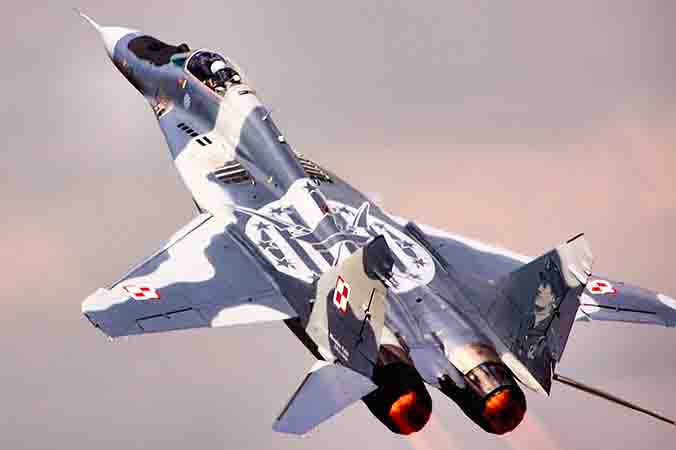
Polish MiG-29 (Source: Wikipedia)
Returning to the previous thread, when Poland is getting rid of some of its planes, waiting for replacements, who will defend the Polish sky in the meantime? One solution could be to transfer at least two American/NATO squadrons to Poland. In this situation, they should absolutely be in place at the same time or earlier than when MiGs would leave the country.
Under no circumstances should Poland release its planes until it has received specific solutions in return. Under no circumstances should they be fooled by mere promises. Not that, as Poles, we do not believe in the effectiveness of Article 5 of the NATO Treaty, or in the unfailing support of our allies, but we have, let's just say, bad experiences from the past in this regard.
If we had made a "sovereign" decision to hand over our planes directly to Ukraine, we might accidentally find ourselves in a one-on-one situation with Russia, for example, when our allies came to the conclusion that Article 5 does not apply to Poland, because sending these jets to the war zone was not a defensive move — in line with the narrative that Putin would undoubtedly spin at the time. Article 5 does not apply if a given NATO country attacks first, so other NATO countries do not have to defend Poland then.
Also, let's not forget that Article 5 does not enter into force automatically. It talks about aid by every other NATO country to the country being attacked, but only "after consultation with other parties on actions it deems necessary, including the use of military force" — this does not sound very comforting, and this clause has never, in fact, been tested in the history of NATO. Little consolation for Poland when the US will offer its moral support, and Germany will send helmets, when Poland finds itself in the position of Ukraine.
Shifting Responsibility
Dr. Leszek Sykulski, a well-known Polish geopolitician, using the example of the entire fiasco with Polish MiGs, points to the phenomenon of "buck-passing ", which is being used — as usual, and exactly by-the-book — by our Anglo-Saxon allies, that was originally described by the classic of realism, John Mearsheimer in his 2001 book The Tragedy of Great Power Politics.
It consists of shifting the burden of deterrence, or war with the aggressor, onto another country and thus avoiding direct involvement. [16]
A state that does employ it would prefer someone else from among those threatened by the growing power of the aggressor to take up the challenge and resist. According to Mearsheimer, it is an alternative to the balance-of-power policy.
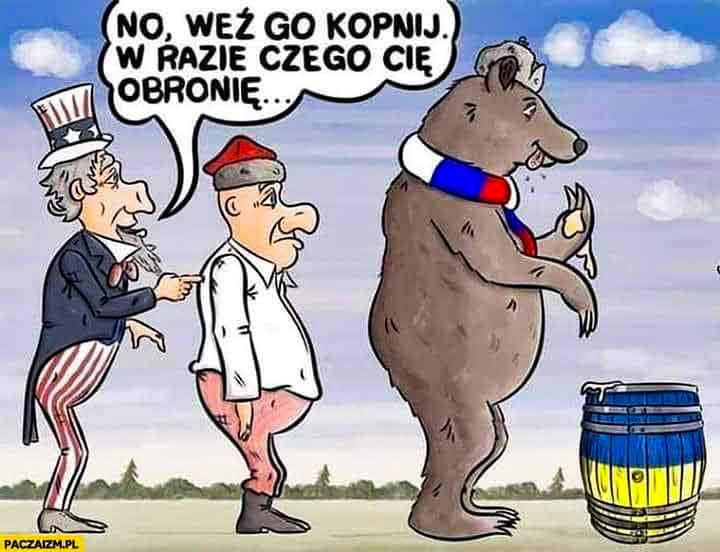
"Go ahead, kick him. I'll defend you, if needed..." (Source: Twitter)
The United States and Great Britain have traditionally avoided direct involvement — in this case — in the war with Russia, trying to fight "to the last Ukrainian soldier", using Ukraine as a kind of strategic bumper . This is not the first time that Anglo-Saxons have used such a policy. Franklin D. Roosevelt eagerly fought, for example, with Nazi Germany and Japan, allying with Stalin — this is just one such example.
Where Do the Replacement Planes Come From?
According to proposals, for example from the British, in exchange for MiG-29 planes Poland would receive Western planes with "similar capabilities". In practice, this can only mean the American F-16s that Poland already operates. Other models are out of the question, as Poland cannot afford yet one more type of combat aircraft. Poland has the F-16, which it has been switching to since 2006, so accepting more of them would not be a problem. From 2024, the previously ordered F-35s are also to be delivered to the banks of Vistula River — and this is already a sufficient logistic nightmare.
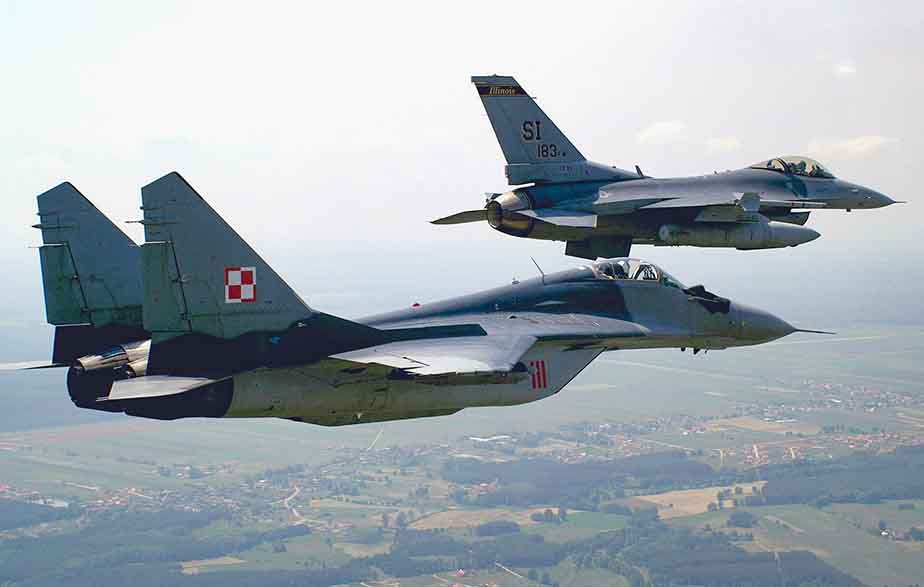
Polish MiG-29 (foreground) and F-16 over the airbase in Krzesiny, Poland (Source: Wikipedia)
Now the question arises, where would these F-16 planes come from to fill the gap in Polish equipment? It seems that there are a number of these brand new aircraft that are close to being combat-ready, but this contingent was originally intended to be transferred to Taiwan. The US has some stocks of F-16s in storage, but given that there were numerous versions of them, differing in equipment and performance, it is not clear that it would be possible to quickly adapt enough of them to fit in with the operations in Poland.
Technical and Logistical Problems
Polish MiGs — let us recall, those were manufactured back in the Soviet era — were modernized in 2013 and 2014 with new avionics and other equipment. This was to extend their service life so that the Polish military aviation could change over to American equipment, i.e. the F-16, and the F-35 aircraft expected in 2024. The modernization, itself very limited, while not increasing the combat capabilities of these aircraft, resulted in the installation of new, sensitive and potentially secret NATO technologies that would probably have to be dismantled before the handover to the Ukrainians. Undoubtedly, communication systems, friend/foe transponders, and encryption devices would have to be removed.
Seemingly a trivial matter, but the avionics of Polish MiGs, i.e. on-board instruments, have been modified and changed from the metric standard still used in Ukraine, to the imperial system, i.e. from kilometers-per-hour and meters in altitude, to knots and feet, in accordance with aviation standards in the West that come from America. These instruments would have to be changed back, because it is unreasonable to require the Ukrainian pilots to convert in their heads from one measurement system to another, in the heat of battle.
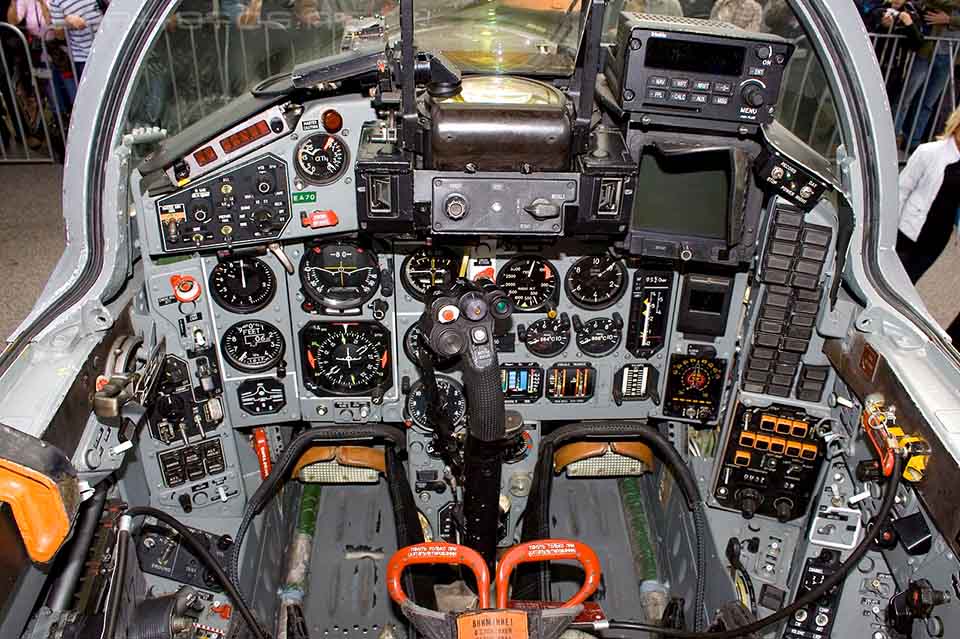
The cockpit of the Polish MiG-29 (Source: Twitter/Alex Tiffin)
Let's also ask how to deliver these planes to Ukraine? Who exactly would man them during the flight? It would seem that they would have to be Ukrainian pilots, regardless of whether they were taking off from Poland, or from Germany. There was already a case of a Ukrainian combat plane that lost its way to Romania in the first days of the war. It returned to Ukraine, but to the accompaniment of complaints and threats from Putin. Would the flight of a dozen/several dozen end up only with threats?
Contrary to popular media reports, after ferrying to Ramstein in Germany, these fighters would theoretically still be within flight range to Ukraine. Without additional tanks, the MiG-29 has a cruising range of 1,500 km (930 miles) and 2,100 km (1,300 miles) with external tanks. [3] The straight-line distance from Ramstein to, e.g., Lviv is 1,176 km (731 miles). However, the flight of a combat aircraft to the war zone is not a passenger flight. Airplanes would have to fly below radar altitude in order not to be easily detected, resulting in much higher fuel consumption. It could turn out that they are not even able to reach Lviv and have to make a stopover: in the Czech Republic, Slovakia or Poland.
The flight itself would have to be logistically secured, for example, one would have to change the route every now and then, put other NATO decoy planes simulating a flight in the air, in order to confuse the Russians. In a word, it would have to be a whole, well-prepared operation.
Legal Problems
If the problems described so far are not enough, there are additional legal issues.
First, it is about the owner of these planes. Currently, Poland is the undisputed owner. Would Poland sell, or formally hand over these planes to US forces? If so, on what terms?
Secondly, as many as over a dozen of these planes come from the state of the former German Democratic Republic (GDR). They became the property of present-day Germany after reunification, and Germany later sold them to Poland. We do not know what contract clauses are in force in this case, but the agreement with Germany may legally restrict to whom, and on what terms, Poland can sell or hand over these planes. Everything could surely be worked out, but it takes time and effort — and the consent of Germany is not guaranteed in this case.

MiG-29 in the colors of the German air force (Source: Wikipedia)
Finally, for something completely prosaic, the state markings on airplanes would have to be changed. Polish symbols would have to be repainted — with what exactly? For a flight to Germany — maybe with civilian markings? Then — without any signs? In Ukraine, they would have to be marked with the colors of the Ukrainian air force. It seems to be insignificant, but it prolongs and complicates the whole thing.
What's Next?
So, while everyone wants to get involved somehow, Polish planes are an international "hot potato" with which nobody wants to be finally caught in their hands, lest they be the first target when Putin, pushed against the wall, seeks revenge.
“I think we can see that the Polish proposal shows that there are some complexities in this matter when it comes to providing security systems. We need to make sure we do it the right way," the Secretary of State Antoni Blinken vaguely explained to reporters on Wednesday at the State Department headquarters. This is a fundamental change in the position of American diplomacy within a span of a few days.
US Defense Secretary Lloyd Austin, on the same day, formally and finally rejected the idea of transferring MiGs to Ukraine.
"The failure of Biden's team to support Warsaw is a failure of the US leadership." The Wall Street Journal replied in its editorial. [15]
In our opinion, nothing will come of it, at least as far as sending over whole combat aircraft in working order. It is too complicated, risky, and the Americans decided it was not worth it at all, and strongly rejected it. Perhaps the main reason for the failure of this operation was the overly loose languages of politicians in many countries. Loose lips sink ships. We are in the state of war and military secrecy should apply.
However, we would not be surprised if, at least, spare parts for this type of aircraft from Poland were on their way to, or even already in place in, Ukraine.





